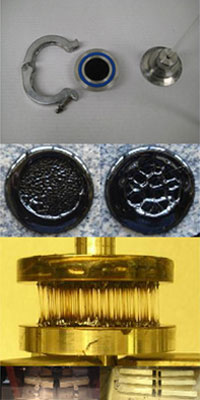Workshop Overview

Characterization of asphalt binders in practice is largely limited to developing specifications based on empirical tests that allow the user to select the appropriate binder for a given environmental condition.
In the last 15 years, there has been an increased emphasis on the development and use of a performance-based approach to select asphalt binders for use in mixtures subjected to a variety of different loading and environmental conditions. Consequently, the characterization of asphalt binders has evolved to incorporate test methods and models that address various dimensions pertaining to mixture properties and performance. Understanding the damage evolution and mechanical response of asphalt binders has also been increasingly recognized as an important first step to fully characterize the mechanical response and long-term performance of asphalt mixtures. The interactions between binder and fillers or fine aggregates make it equally important to investigate the mastic phase in asphalt mixtures.
This international workshop was organized by the Working Group 07 on Bitumen and Mastics of the Technical Committee on Constitutive Modeling of the International Society for Asphalt Pavements (ISAP). The main objective of this workshop was to serve as a platform for exchange of information on the state-of-art in various aspects of modeling and characterization of bitumen and mastics. The workshop also facilitated the development of a vision and needs statement for the technical committee and future research in this area.
Proceedings
The conference proceedings page, which includes conference presentations in PDF format, is now online. All attendees will receive a login and password from the conference organizers. Please contact Raul Velasquez if you have any questions.
Date and Location
September 16-17, 2010
Engineering Hall, Room 1610
1415 Engineering Drive
Madison, Wisconsin 53706
Topics and Speakers
| Thursday, September 16, 9am - 12pm | ||
| 1 | Historical perspective, technical and logistical challenges facing the future modeling efforts | T. Scarpas |
| 2 | European perspective of binder characterization | M. Southern |
| 3 | Mechanical models and analogs for mastics | H. DiBenedetto |
| 4 | Mathematical, phenomenological, and statistical models for binders and mastics | M. Marasteanu D. Anderson |
| Thursday, September 16, 1:30pm - 4:30pm | ||
| 5 | Models for cracking based on dissipated energy and non-linear response | A. Bhasin |
| 6 | Models for plastic deformation based on non-linear response for FEM implementation | E. Masad |
| 7 | Overview of the use of fracture mechanics for binders and mastics characterization | R. Velasquez |
| 8 | Micromechanics models to characterize damage | Y-R. Kim |
| Friday, September 17, 9am - 12pm | ||
| 9 | Micromechanics models to characterize healing | D. Little |
| 10 | Models to characterize crack-growth using VECD and VPCD approaches | E. Kutay |
| 11 | Phenomenological models for fatigue, cracking and rutting | H. Bahia |
| 12 | Oxidation and kinetics of aging in asphalt binders | C. Glover |
| Friday, September 17, 1:30pm - 4:30pm | ||
| 13 | Addition of polymers to binders and limitations in knowledge | B. Kluttz |
| 14 | Addition of chemical additives to binders and limitations in knowledge | JV. Martin |
| 15 | Update on NCHRP 9-45: Test Methods for Mineral Filler Used in HMA | A. Faheem |
| Summary | ||
| 16 | State of the art, vision for modeling efforts, and concluding discussion | Round Table Discussion |
Contacts
- Professor Hussain Bahia
bahia@engr.wisc.edu - Professor Amit Bhasin
a-bhasin@mail.utexas.edu - Dr. Raul Velasquez
ravelasquez@wisc.edu




